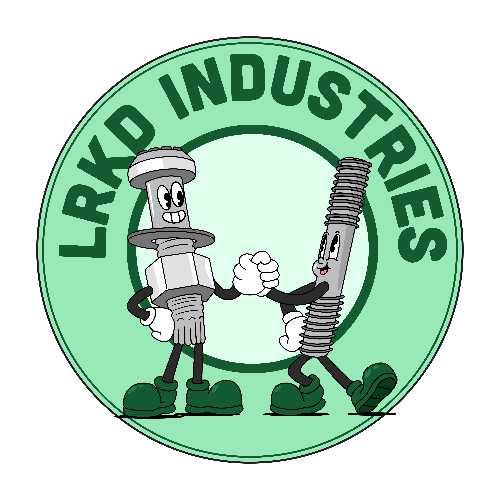Metal decking is an essential component in modern construction, offering strength, durability, and structural integrity for floors and roofs in commercial and industrial buildings. Proper installation is crucial to maximizing its lifespan, ensuring safety, and optimizing performance. This guide outlines the best practices for metal decking installation, covering key aspects such as preparation, material selection, fastening techniques, and load capacity considerations.
Understanding Metal Decking Applications
Metal decking is primarily used in two applications:
Floor Decking: Serves as a structural platform and formwork for concrete slabs.
Roof Decking: Acts as a structural base for roofing systems, providing support and stability.
Types of Metal Decking
|
Type |
Description |
Typical Applications |
|
Composite Decking |
Designed to bond with concrete, increasing structural strength. |
High-rise buildings, bridges |
|
Non-Composite Decking |
Provides formwork but does not contribute to structural integrity. |
Industrial flooring, mezzanines |
|
Roof Decking |
Supports roofing systems and insulation. |
Warehouses, commercial buildings |
|
Acoustic Decking |
Includes perforations to improve sound absorption. |
Auditoriums, stadiums |
Industry Trends and Advancements
Recent advancements in metal decking technology include:
High-strength steel formulations for better load-bearing capacity.
Galvanized coatings to enhance corrosion resistance.
Pre-punched holes for easier attachment of utilities and reinforcements.
Pre-Installation Best Practices
Before installation, proper planning and site preparation are necessary to ensure smooth execution and durability.
Material Inspection & Storage
Verify deck gauge, coating, and specifications against project requirements.
Store decking on level ground, elevated from moisture, and covered to prevent corrosion.
Check for any visible damage, warping, or manufacturing defects.
Site Preparation
Ensure the supporting structure (beams and joists) is level and properly aligned.
Mark column locations, openings, and cutouts before installation.
Confirm deck layout with the project engineer to avoid mismatched sections.
Installation Techniques for Maximum Durability
Fastening Methods
The strength and stability of metal decking depend on secure fastening. Common methods include:
|
Fastening Method |
Description |
Application |
|
Welded Attachment |
Spot welding the deck to structural steel. |
High-strength applications requiring permanent bonds. |
|
Mechanical Screws |
Self-drilling screws that secure the deck. |
Projects requiring flexibility and easier removal. |
|
Pneumatic Pins |
Powder-actuated fasteners for quick attachment. |
Time-sensitive installations with moderate load demands. |
|
Button Punching |
A method used to interlock adjacent deck panels. |
Increasing load transfer and lateral stability. |
Proper Deck Placement & Alignment
Deck Overlap: Ensure proper side lap connections (typically 1.5” to 3”) to maintain integrity.
Alignment: Align panels accurately to avoid gaps and misalignment issues.
Bridging: Use temporary supports to prevent sagging during concrete pouring.
Load Capacity Considerations
Load capacity is a critical factor in selecting and installing metal decking. Engineers determine the correct specifications based on span length, deck gauge, and expected live and dead loads.
Load Capacity Chart for Typical Metal Decking
|
Deck Type |
Gauge |
Maximum Span (ft) |
Live Load (psf) |
Dead Load (psf) |
|
Composite Deck 2” |
18 |
12 |
100 |
30 |
|
Composite Deck 3” |
16 |
14 |
150 |
40 |
|
Roof Deck 1.5” |
22 |
10 |
50 |
20 |
|
Acoustic Deck 2” |
20 |
12 |
75 |
25 |
Live Load refers to temporary loads such as people, furniture, and equipment.
Dead Load includes the weight of the deck, concrete, and permanent fixtures.
Key Takeaways for Load Considerations:
Always adhere to the manufacturer’s load capacity ratings.
Use reinforcement (such as rebar) for heavy-load applications.
Consider environmental factors like snow loads and seismic activity.
Post-Installation Best Practices
Proper post-installation procedures ensure long-term durability and safety.
Inspection & Quality Control
Check for proper fastening at all support points.
Inspect welds and mechanical connections for uniformity.
Ensure adequate side lap engagement and button punching.
Corrosion Protection & Maintenance
Apply protective coatings (zinc or epoxy) if exposed to harsh environments.
Remove any debris or standing water to prevent rusting.
Schedule periodic inspections to check for wear and tear.
Concrete Pouring Considerations (For Floor Decks)
Maintain even distribution during concrete pouring to avoid overloading sections.
Use shoring if necessary to prevent deflection.
Allow proper curing time before applying additional loads.
Metal Decking in High-Rise Construction
A case study from a 40-story commercial tower in New York demonstrated how precision metal decking installation improved structural efficiency. The project used:
18-gauge composite metal decking for optimal strength.
Welded fastening to maximize load transfer.
Galvanized coatings to enhance longevity.
This resulted in a 30% reduction in material costs and 20% faster installation due to pre-planned deck layouts.
Conclusion
Installing metal decking correctly is essential to ensuring maximum durability, safety, and performance. By following best practices in material selection, site preparation, fastening methods, and load management, construction professionals can enhance the longevity and efficiency of their structures. Whether for floors, roofs, or specialized applications, attention to detail in metal decking installation can lead to significant cost savings and structural improvements.
For more information or product recommendations, contact LRKD Industries—your trusted partner in high-performance metal decking solutions.
Metal Decking Installation Solutions
Ensure strength from the ground up! Our expert-backed metal decking installation service follows the best industry practices to deliver maximum durability and structural integrity on every project. Whether you're working on commercial buildings, industrial complexes, or high-rise developments, our precision approach eliminates costly mistakes and ensures long-term performance.
Trust LRKD Industries to streamline your metal decking process—built for reliability and efficiency.
👉 Submit your plans today for a FREE consultation on your metal decking requirements.
📍 Address: 98 N Industry CT, Deer Park, NY 11729, US
📞 Phone: +1 646-880-6778
📧 Email: info@lrkdindustries.com
We also support file conversions to .dwg format for seamless integration with Tekla, making your modeling and fabrication workflow smoother than ever.
For more information about our product and services, click here.
When structural strength matters, expert installation isn’t optional—it’s the standard.


